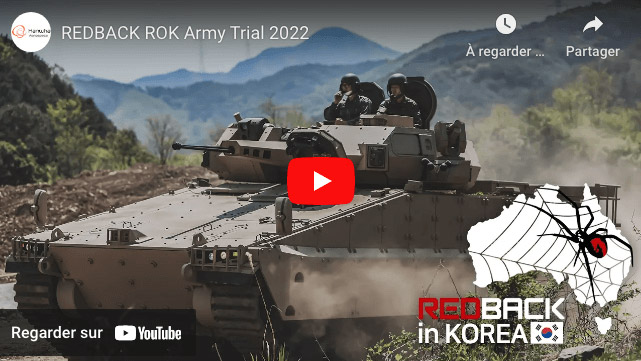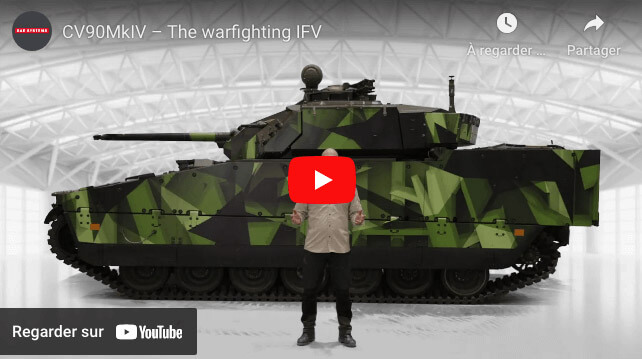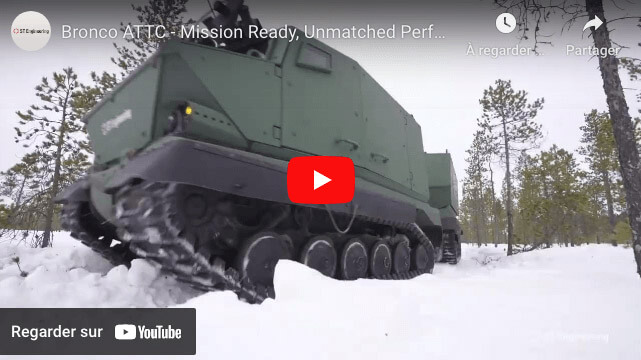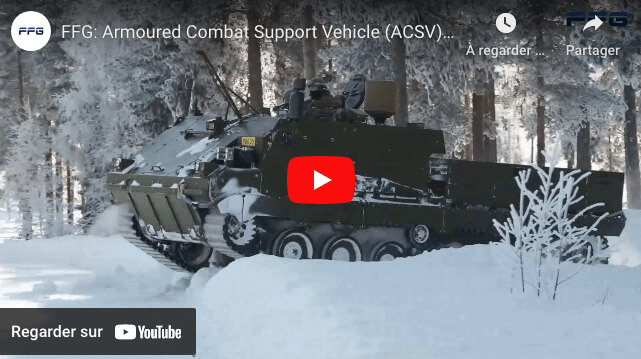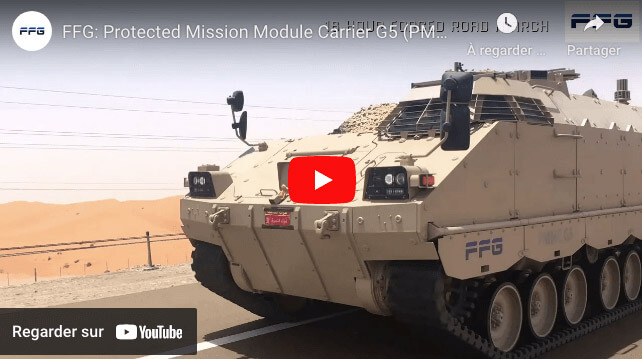CRT SYSTEMS
Our Composite Rubber Track systems have been operationally deployed in several theatres, meeting the specific requirements of militaries worldwide.
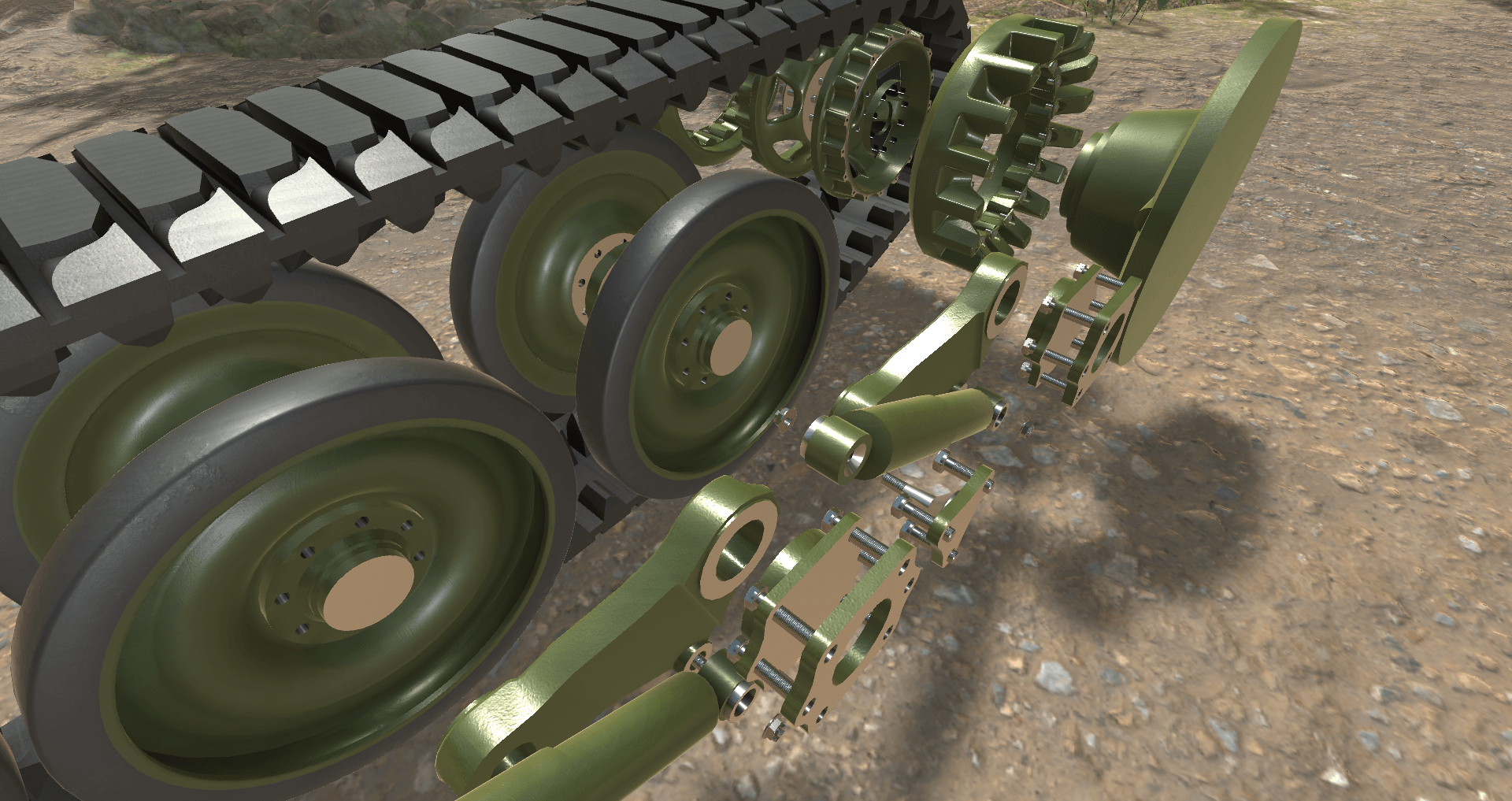
EXPLORE OUR CRT SYSTEMS IN 3D
Thanks to Modest Tree and 3D technology, you can now view the various components of our Composite Rubber Track System like never before. From the Starting Hub, visitors can click on components to isolate and expand.
Warning: Our 3D platform may be slow or difficult to access if too many visitors attempt to connect at once.
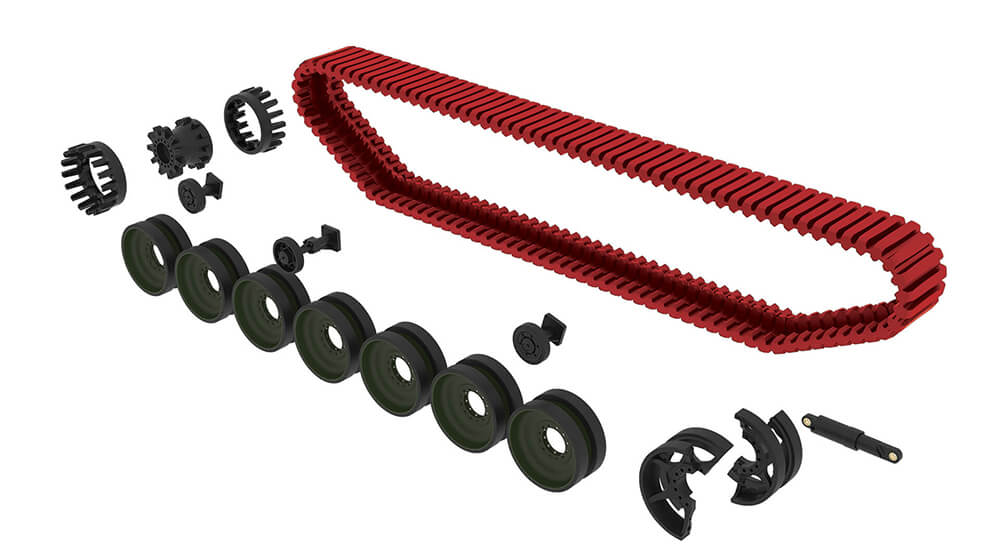
Composite Rubber Track
Composite Rubber Track (CRT) is arguably the most significant technological development in mobility since the invention of armoured tracked vehicles. CRT consists of a continuously cased rubber band structure, reinforced with a range of composite materials and steel cord longitudinally and laterally. It is supplied as a singular monolithic continuous track.
Also incorporated within the CRT are carbon nanotubes, used for their exceptional strength and stiffness. These provide exceptional thermal properties allowing for better heat dissipation within the track, preventing hot spots and premature failure. Power is transferred from the vehicle final drive to the CRT by an internal drive sprocket. The track is assembled in a precise sequence, giving it the strength and durability required for military applications.
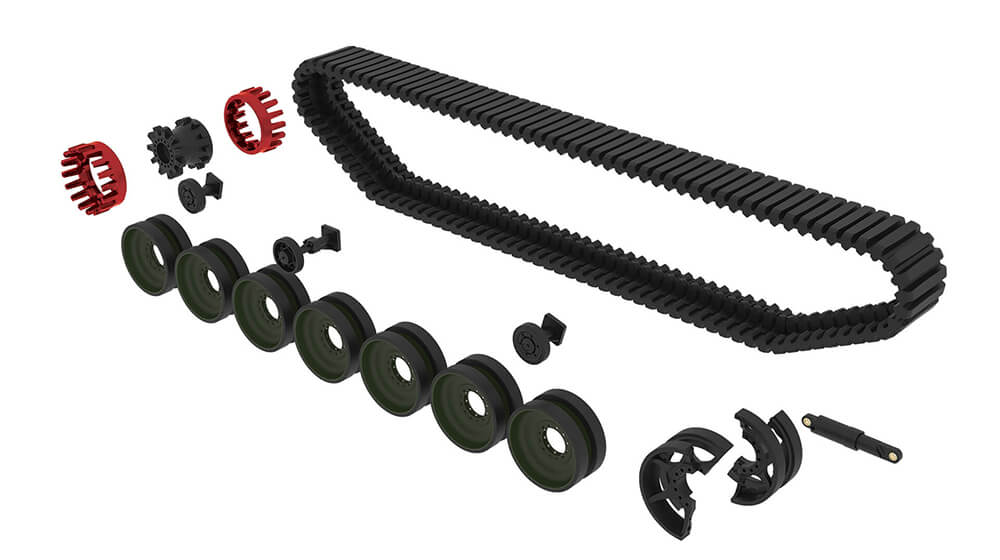
Half-Sprockets
To accommodate the diverse weight range classification of Soucy’s CRT integrated Armoured Vehicles (AVs).
Soucy manufacture 2 types of sprockets:
- Full Cast Iron (FCI) – FCI sprockets are manufactured by Soucy and constructed of austempered ductile iron in Soucy’s Foundry and machining factories. Soucy provide generic FCI sprockets or depending on vehicle program requirements can also provide bespoke FCI sprockets . The FCI sprockets are more commonly used on higher Gross Vehicle Weight (GVW) platforms in order to accommodate the additional forces being placed on it.
- Ultra-High Molecular Weight Polyethylene (UHMW-PE) – UHMW-PE Sprockets are manufactured by Soucy Plastics. This very tough material has the highest impact strength of any thermoplastic presently manufactured and is also highly resistant to abrasion. Soucy have generic or bespoke UHMW-PE sprockets. These are commonly used in the light to medium GVW platforms.
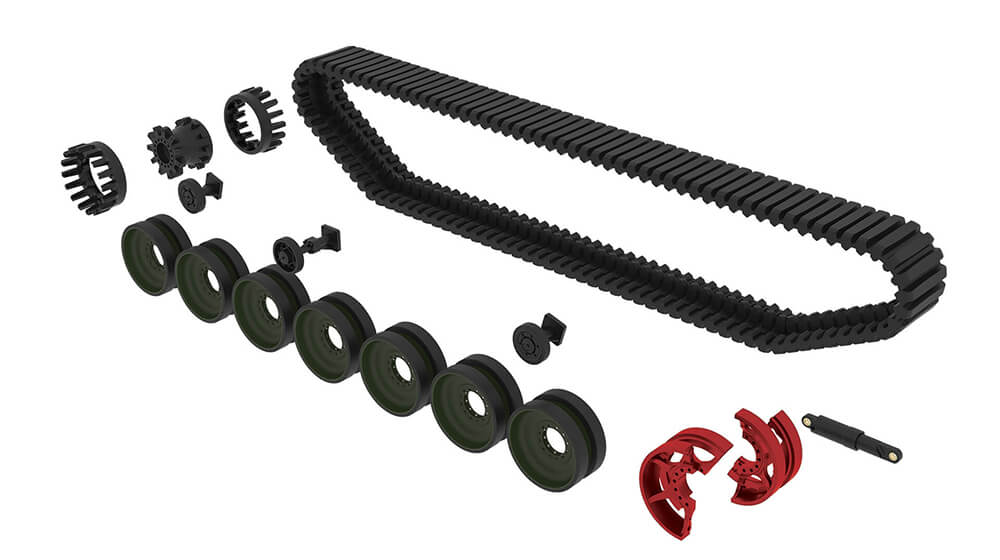
Idlers
Soucy manufacture Idler wheels on Customer request. The idlers are constructed of austempered ductile iron giving a high resistance to wear. The outer circumference of the idler has a rubberized tire reducing wear on the tracks it also incorporates anopen design feature that reduces the build up of dirt, mud and snow. The idler wheel operates in conjunction with the vehicle tensioning system to maintain optimum track tension.
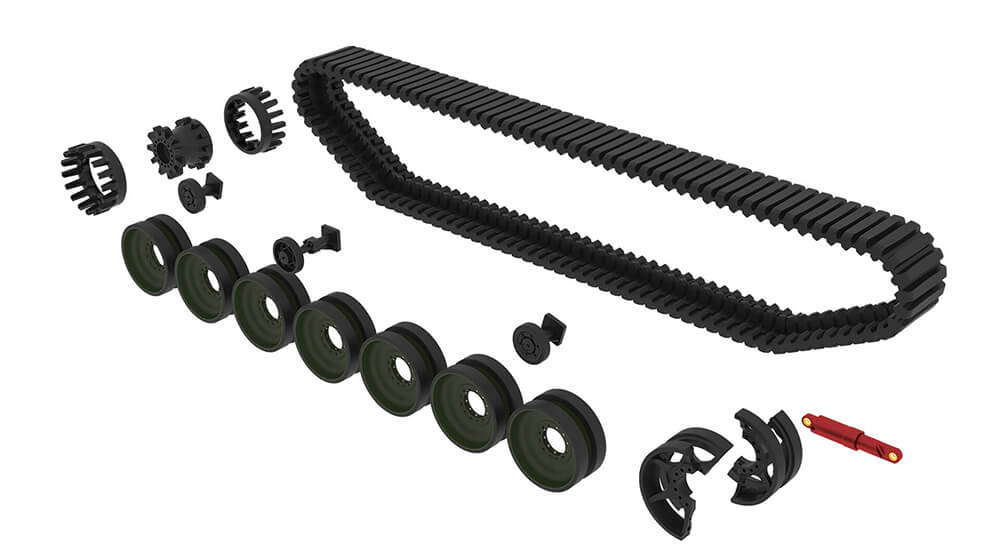
Collapsible Tensioner
As the longitudinal stiffness of CRT is higher than ST, Soucy have designed a Collapsible Tensioner (CT) to prevent damage to other running and suspension components. The CT during normal operation maintains the CRT at its nominal working tension. If the CRT tension is increased due to the ingress of rocks or debris between the tracks, sprocket or Idler wheel the CT will collapse preventing damage to other components

Composite Rubber Track
Composite Rubber Track (CRT) is arguably the most significant technological development in mobility since the invention of armoured tracked vehicles. CRT consists of a continuously cased rubber band structure, reinforced with a range of composite materials and steel cord longitudinally and laterally. It is supplied as a singular monolithic continuous track.
Also incorporated within the CRT are carbon nanotubes, used for their exceptional strength and stiffness. These provide exceptional thermal properties allowing for better heat dissipation within the track, preventing hot spots and premature failure. Power is transferred from the vehicle final drive to the CRT by an internal drive sprocket. The track is assembled in a precise sequence, giving it the strength and durability required for military applications.

Half-Sprockets
To accommodate the diverse weight range classification of Soucy’s CRT integrated Armoured Vehicles (AVs).
Soucy manufacture 2 types of sprockets:
- Full Cast Iron (FCI) – FCI sprockets are manufactured by Soucy and constructed of austempered ductile iron in Soucy’s Foundry and machining factories. Soucy provide generic FCI sprockets or depending on vehicle program requirements can also provide bespoke FCI sprockets . The FCI sprockets are more commonly used on higher Gross Vehicle Weight (GVW) platforms in order to accommodate the additional forces being placed on it.
- Ultra-High Molecular Weight Polyethylene (UHMW-PE) – UHMW-PE Sprockets are manufactured by Soucy Plastics. This very tough material has the highest impact strength of any thermoplastic presently manufactured and is also highly resistant to abrasion. Soucy have generic or bespoke UHMW-PE sprockets. These are commonly used in the light to medium GVW platforms.

Idlers
Soucy manufacture Idler wheels on Customer request. The idlers are constructed of austempered ductile iron giving a high resistance to wear. The outer circumference of the idler has a rubberized tire reducing wear on the tracks it also incorporates anopen design feature that reduces the build up of dirt, mud and snow. The idler wheel operates in conjunction with the vehicle tensioning system to maintain optimum track tension.

Collapsible Tensioner
As the longitudinal stiffness of CRT is higher than ST, Soucy have designed a Collapsible Tensioner (CT) to prevent damage to other running and suspension components. The CT during normal operation maintains the CRT at its nominal working tension. If the CRT tension is increased due to the ingress of rocks or debris between the tracks, sprocket or Idler wheel the CT will collapse preventing damage to other components
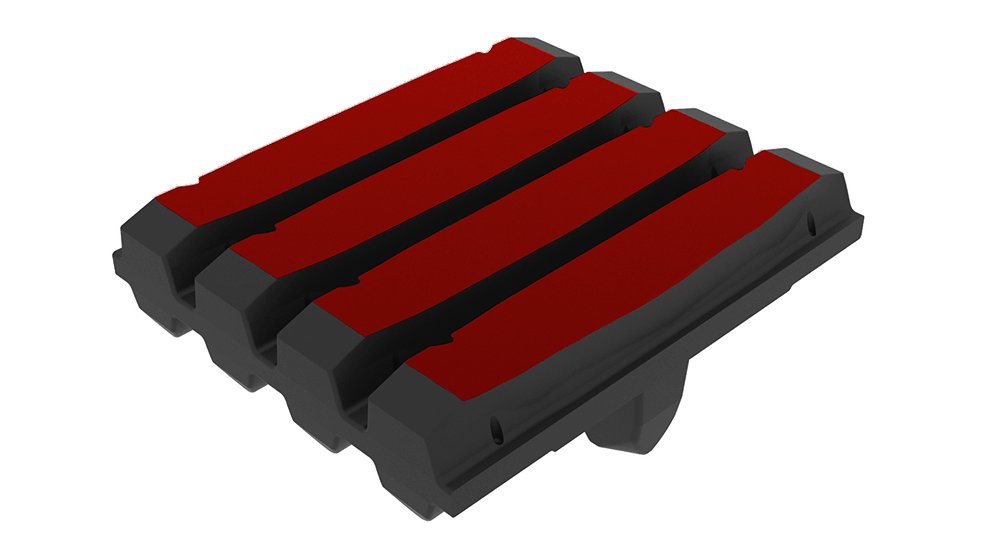
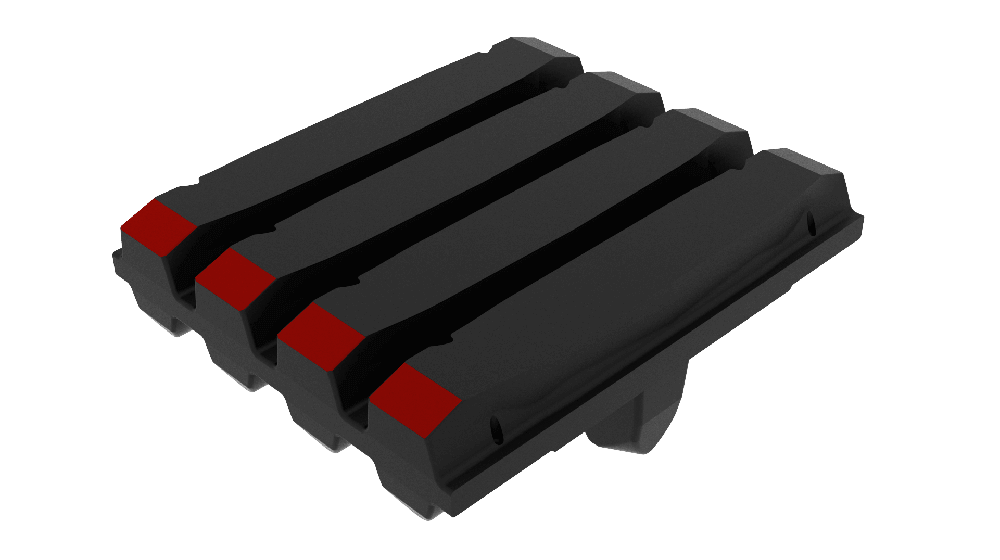
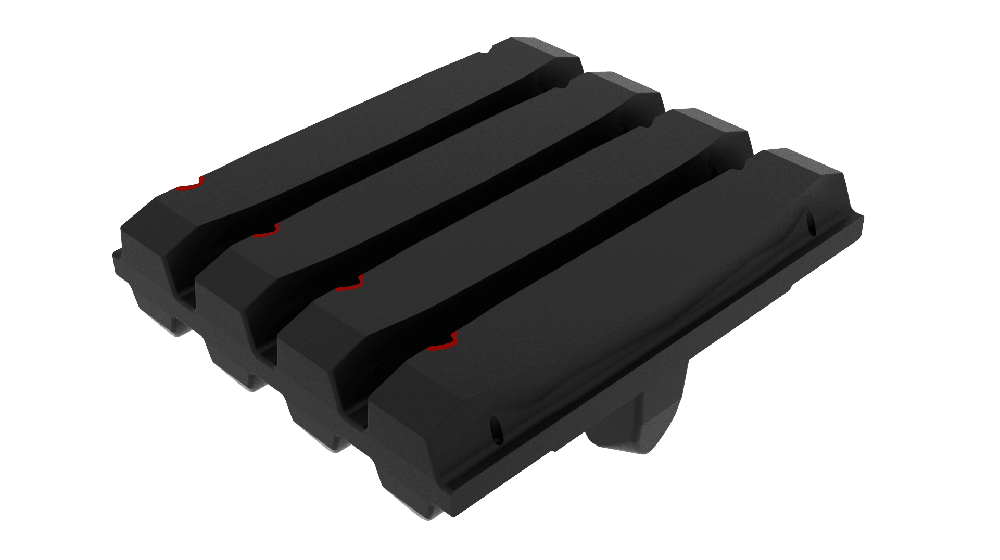
Treads
Maximized traction and wear resistance
Minimized ground pressure and heat generation
Increased ground contact and optimized mud evacuation shape
Chamfer
increased steering ability and lateral grip
Wear Limit Indicator
Visual indication of roadwheel camber wear on the track system
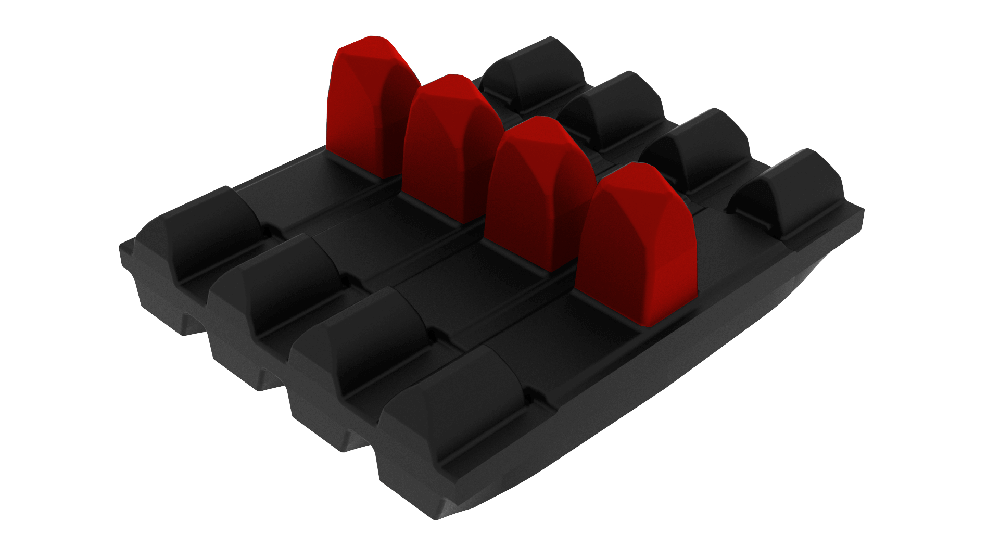
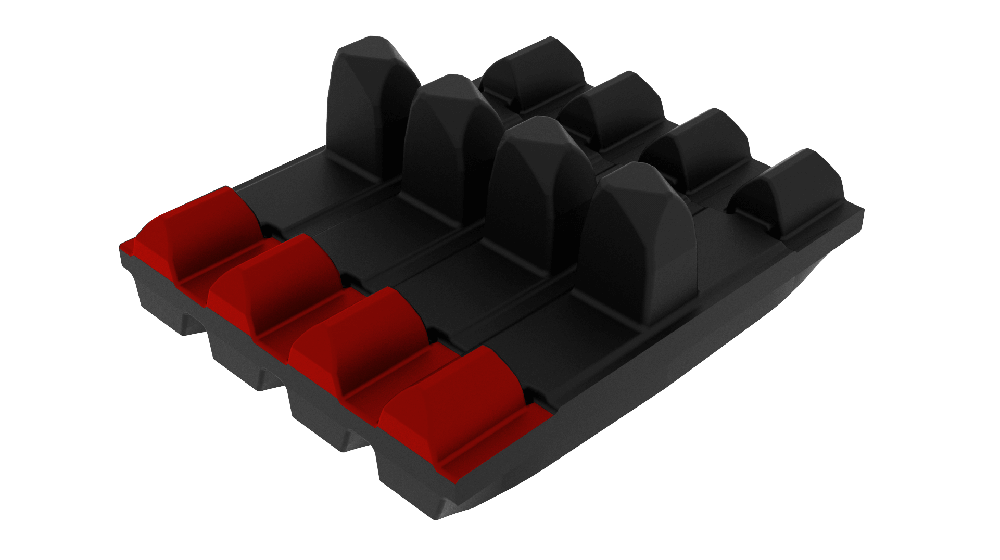
Guide Lugs
Optimized for roadwheel engagement and detracking resistance
Guide horns designed with high abrasion resistance rubber
Drive Lugs
Designed to minimize ratcheting during maximum tractive effort, hard turning or severe breaking

Treads
Maximized traction and wear resistance
Minimized ground pressure and heat generation
Increased ground contact and optimized mud evacuation shape

Chamfer
increased steering ability and lateral grip

Wear Limit Indicator
Visual indication of roadwheel camber wear on the track system

Guide Lugs
Optimized for roadwheel engagement and detracking resistance
Guide horns designed with high abrasion resistance rubber

Drive Lugs
Composite Rubber Track Systems
Engineered to deliver high performance, reduce vehicle weight and minimize rolling resistance. Our Composite Rubber Tracks use Soucyprene®
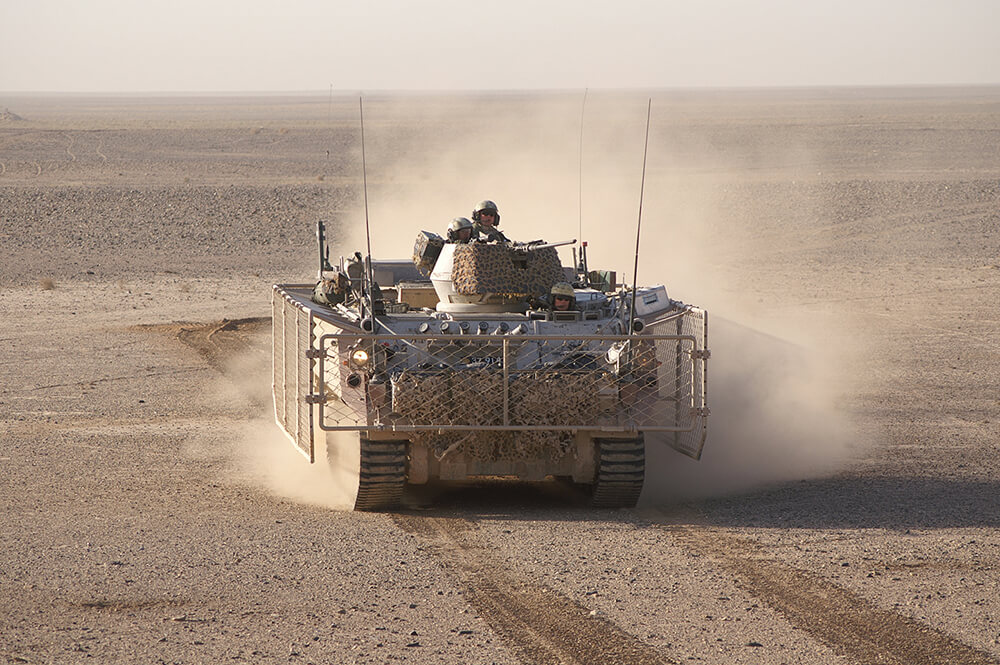
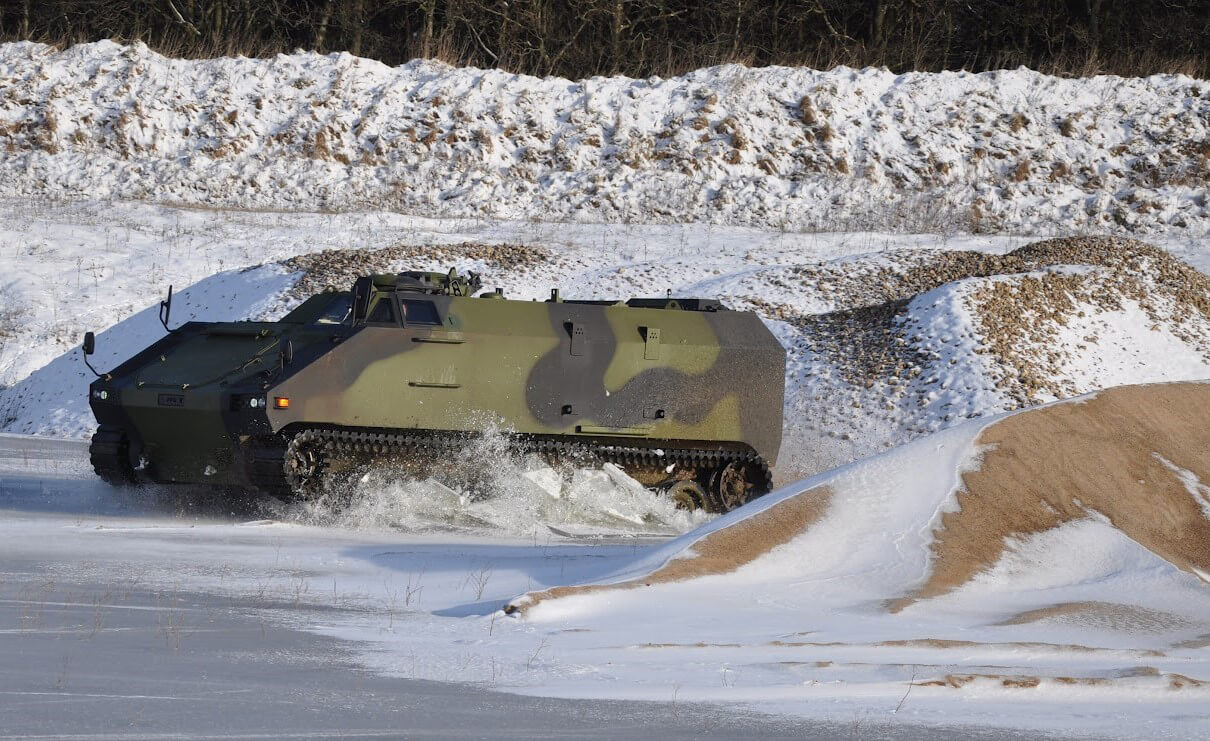
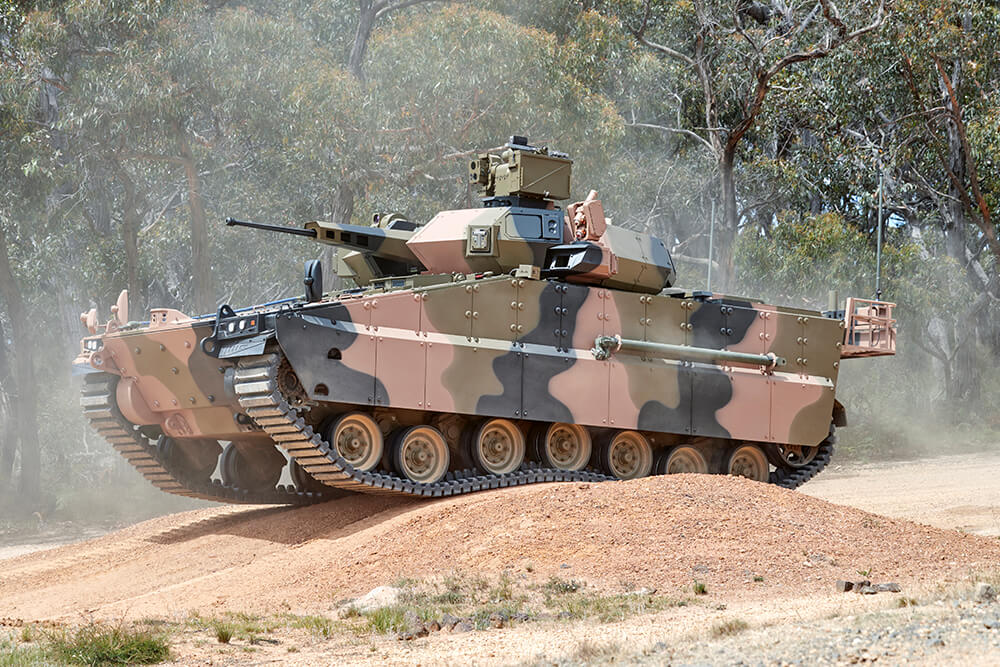
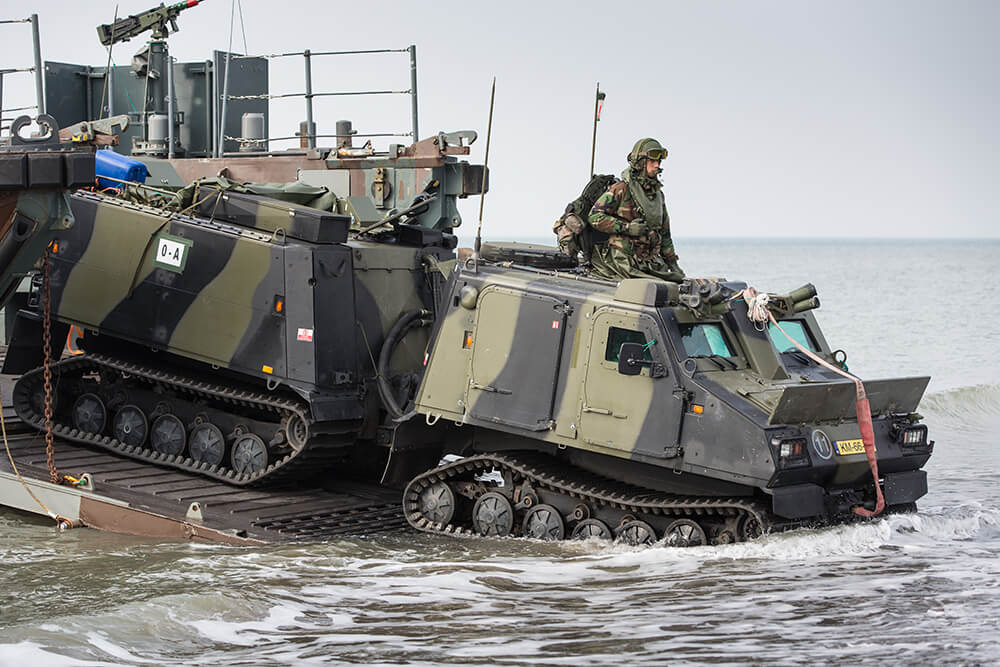
Land Systems
Soucy Track Systems Available : 3
Track Width Range : 350 -400 mm
Track Length Range* : 9700 – 9800 mm
Track Weight Range : 400 – 430 Kgs
Track Pitch Range : 105 – 127 pitches
Users and potential users : M113A2, CVRT,
Soucy Track Systems Available : 3
Track Width Range : 400-460 mm
Track Length Range* : 9770 – 12400 mm
Track Weight Range : 400 – 820 Kgs
Track Pitch Range : 105 – 128 pitches
Users and potential users : M113A3, G5, ACV, M109, BMP3, K21
Soucy Track Systems Available : 3
Track Width Range : 500- 580 mm
Track Length Range* : 13400 -13700 mm
Track Weight Range : 750 – 1200 Kgs
Track Pitch Range : 105 – 128 pitches
Users and potential users : CV90, WR, AJAX, ASCOD, BRADLEY, BORSUK, LEOPARD 1
Soucy Track Systems Available : 4
Track Width Range : 600 – 650 mm
Track Length Range* : 5800 – 6000 mm
Track Weight Range : 200 – 300 Kgs
Track Pitch Range : 80-90 (Per unit)
Users and potential users : BV-206, BVS10, BRONCO
Land Systems

10mT TO 15mT
Soucy Track Systems Available : 3
Track Width Range : 350 -400 mm
Track Length Range* : 9700 – 9800 mm
Track Weight Range : 400 – 430 Kgs
Track Pitch Range : 105 – 127 pitches
Users and potential users : M113A2, CVRT,

16mT TO 25mT
Soucy Track Systems Available : 3
Track Width Range : 400-460 mm
Track Length Range* : 9770 – 12400 mm
Track Weight Range : 400 – 820 Kgs
Track Pitch Range : 105 – 128 pitches
Users and potential users : M113A3, G5, ACV, M109, BMP3, K21

26mT TO 42mT
Soucy Track Systems Available : 3
Track Width Range : 500- 580 mm
Track Length Range* : 13400 -13700 mm
Track Weight Range : 750 – 1200 Kgs
Track Pitch Range : 105 – 128 pitches
Users and potential users : CV90, WR, AJAX, ASCOD, BRADLEY, BORSUK, LEOPARD 1

ARTICULATED VEHICLES 8mT TO 15mT
Soucy Track Systems Available : 4
Track Width Range : 600 – 650 mm
Track Length Range* : 5800 – 6000 mm
Track Weight Range : 200 – 300 Kgs
Track Pitch Range : 80-90 (Per unit)
Users and potential users : BV-206, BVS10, BRONCO
* Note: Track lengths can be manufactured to suit different vehicle lengths & roadwheel stations.
RCV — Robotic Combat Vehicle
Unmanned Ground Systems
Military usage of Remote-Controlled Vehicles (RCVs) is on the rise with a marked increase in Research and Development (R&D). RCVs allow militaries greater access to high-risk areas without increasing the risk to human life. RCVs are designed with, and require numerous electronics and sensors to enable them to perform to their optimum potential. CRT has many advantages allowing RCVs to operate freely in these environments. Moreover, with its low maintenance requirements and durability, CRT Systems on RCV’s enable Commanders to better forecast maintenance breaks into their mission planning.
Composite Rubber Track system is an asset for RCV:
Maneuverability — CRT’s rubber encased system causes less damage to infrastructure. Tracks have significantly lower ground pressure than wheels on comparable platform weights, offering greater terrain accessibility in all weathers. In littoral operations, CRT is saltwater resistant, has reduced corrosion, and aids in platform buoyancy.
Survivability — RCV’s may be used where commanders want better situation awareness without putting the human at risk. Operations such as handling explosives and bomb disposal are common for RCV’s, but future use may see RCV’s conducting tasks closer to the target, for longer periods, or collecting battlefield damage data, whilst keeping the human at a safe distance.
